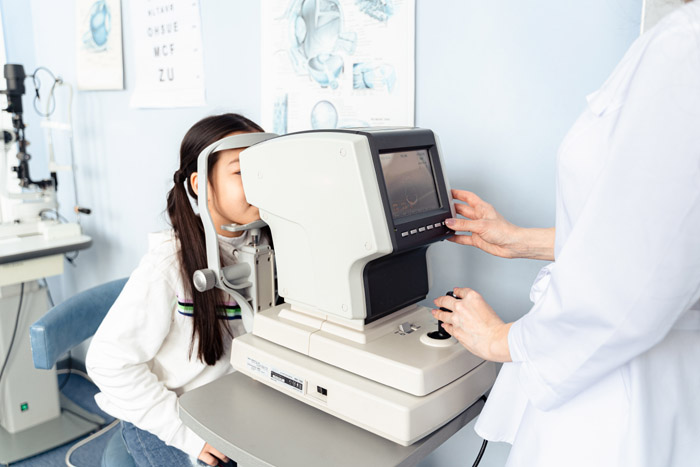Has Your Child Taken An Eye Exam?
Submitted by Advertiser KiasuParent

With myopia (also known as short-sightedness) being so prevalent in Singapore, we have come to regard children wearing spectacles as a common sight.
However, parents understandably still feel pained if they discover that their kids become short-sighted. A mother who goes by the handle ysmtan on the KiasuParents forum shared that she “literally cried” when she found out that her younger son had 200 degree myopia at the age of five.
Another mother, mikiko99 also said: “It’s really heart-breaking to see my son wearing glasses at such a young age. He is only six and still needs to use his eyes for many, many years.”
This is why it is important for parents to keep tabs on your child’s eye health from their early years. Regular eye examinations, recommended to be done once every six months, are as important as other medical appointments, such as your child’s immunisation or dental check-ups.
Why Myopia Should Not Be Taken Lightly
Myopia is a vision condition in which close objects can be seen clearly, but objects further away become blurry. It happens when children’s eyes grow more than they should.
While myopia cannot be cured, one’s vision can be corrected and myopia progression can be slowed down.
The younger a child becomes myopic, the faster their myopia will progress, leading to a high risk of developing high myopia.
The vision of a hypothetical ‘normal’ eye is considered as 6/6 vision, i.e. one can see clearly at 6m what a ‘normal’ eye could see at 6m. If a child has 6/36 vision, it means he can only see clearly at 6m what a ‘normal’ eye could see at 36m.
According to KiasuParents member FumbleDad, his son’s vision had gone from 6/18 to 6/36 without glasses within three years when he was between the age of seven and 10.
Don’t wait till it’s too late: has your child done his/her eye check yet?
It is recommended to get an eye care practitioner to perform an eye exam every six months to uncover eye problems early.
There is no safe level of myopia as there is an increased risk of developing serious vision-threatening complications later in life if myopia progression is not addressed from a young age. Each additional 100 degree of myopia doubles the risk of developing glaucoma and cataract compared to a person with perfect eyesight.
Slow Down Myopia Progression, Not Just Correct It
Standard single-vision lenses can correct myopia but cannot slow down eye elongation or myopia progression.
One of the effective ways of slowing down myopia progression is by wearing myopia management spectacle lenses that help to send a slowdown signal to the eyes and act as a shield against eye elongation, which is the cause for worsening myopia.
Essilor® Stellest® Lenses have been clinically proven to slow down myopia progression by 67% on average compared to single vision lenses, when worn at least 12 hours a day[1].
Using “H.A.L.T*” technology – Highly Aspherical Lenslet Target – Essilor® Stellest® Lenses are made up of a cutting-edge constellation of 1021 invisible** lenslets, which creates a volume of signal in the child’s eye acting as a shield against eye elongation. They are comfortable and easy to adapt for children, with no compromises.
Learn more about Essilor® Stellest® Lenses here or find an Essilor Expert near you today here.
——————–
[1] Compared to single vision lenses, when worn 12 hours a day. Two-year prospective, controlled, randomized, double-masked clinical trial results on 54 myopic children wearing Stellest® lenses compared to 50 myopic children wearing single vision lenses. Efficacy results based on 32 children who declared wearing Stellest® lenses at least 12 hours per day every day. Bao J. et al. (2021). Myopia control with spectacle lenses with aspherical lenslets: a 2-year randomized clinical trial. Invest. Ophthalmol. Vis. Sci.; 62(8):2888.
* Highly Aspherical Lenslet Target
** Aesthetic finish